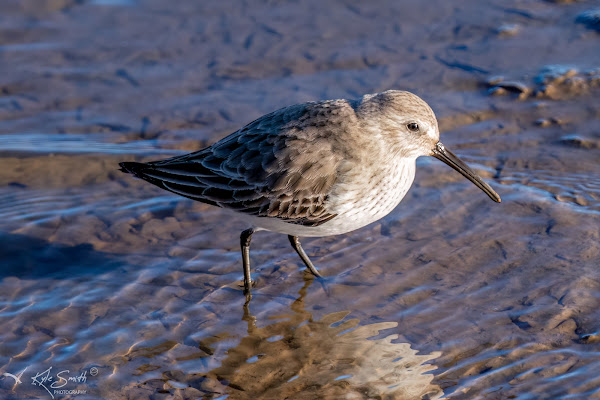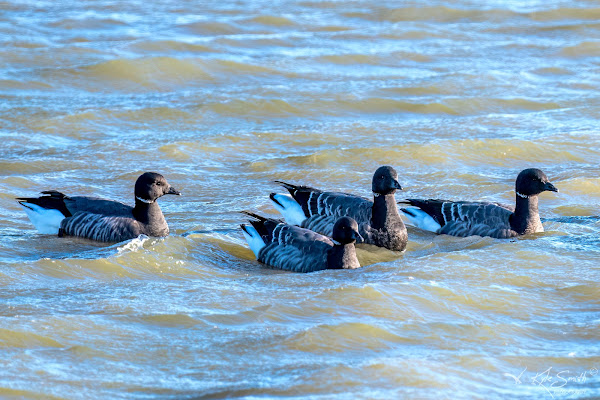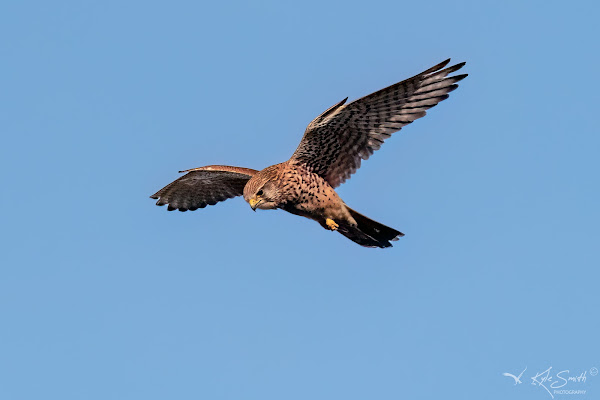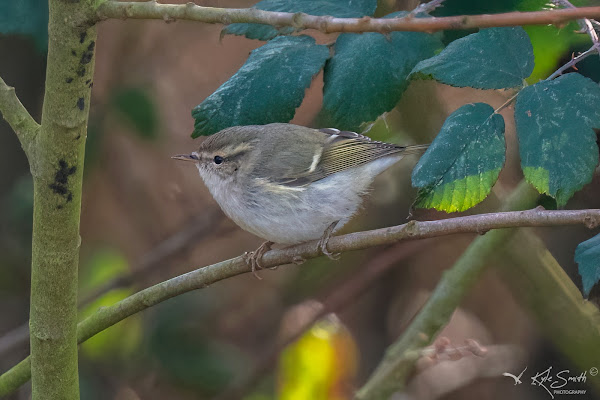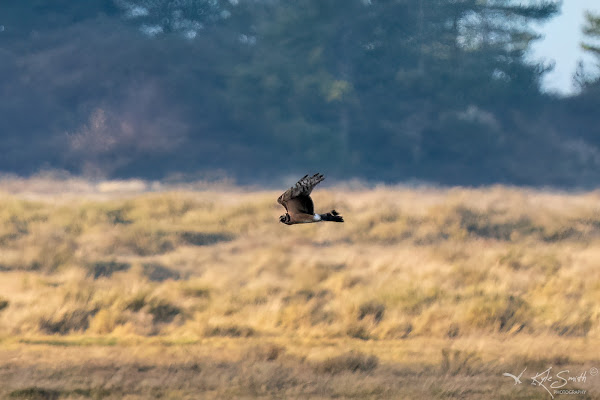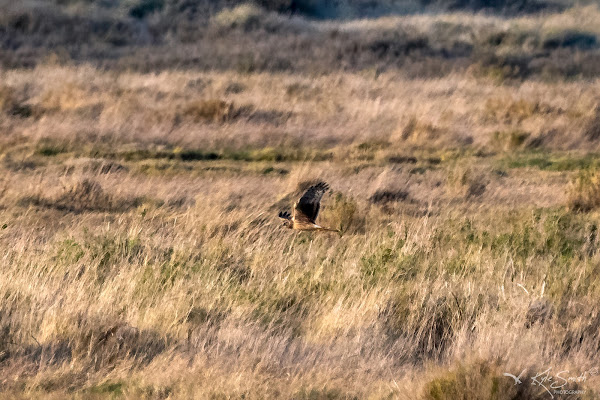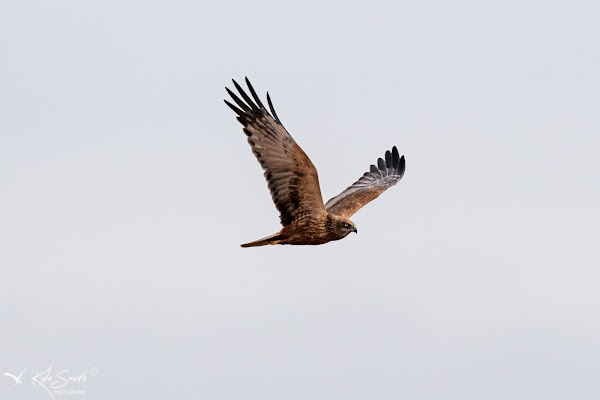This would probably the last opportunity to get out before the New Year "Big Reset" - it had been raining for days and so a day out birding in the dry was to be cherished, although it was forecast to be a bit windy. I picked up Kevin Heath (@kev07713) and Dylan Parry-Davies (@DPDNature) from Kev's house at 4.30am and we were on our way, stopping in King's Lynn for breakfast. While having breakfast Dylan suggested we drop into NWT Roydon Common as three hen harriers had been reported going to roost there the evening before. It wasn't really out of our way and was a no brainer.
Roydon Common forms the heart of the Gaywood Valley Living Landscape Area. Many birds frequent the common, with nightjars and woodlarks nesting in good numbers. In winter there is usually a small roost of hen harriers, and occasional merlin are seen. Barn owls and, occasionally, short-eared owls occur. A great grey shrike is apparently seen during most winters. Wet, boggy areas of the Common are home to all three British species of sundew: round-leaved, oblong-leaved and great. These carnivorous plants can only extract a limited amount of nutrients from the acidic conditions they live in, so supplement their needs by catching and digesting small insects, which they lure with the sticky, sweet-smelling droplets on the end of their hair-covered leaves.
As we came off the main road a larger bird with broad wings crossed the road and over a fence - too dark to ID. We pulled into the car park behind another vehicle which contained a walker and his dog - they went through the gate and away from the wildlife area - it was still pretty much dark. We unloaded scopes, cameras and bins, taking up positions to watch in every direction. Almost immediately Dylan called a woodock flying away from our position up the slope to the trees beyond. The sunrise was spectacular and worth the entrance fee alone! We heard calls as three Egyptian geese departed the marsh area out in front of us.
We watched the sun continue to rise and Kev called a muntjac deer off to our right. Hares could be seen in the fields far to our left and red kites and buzzards started cruising in the sky, putting up flocks of lapwing.
We continued scanning but couldn't spot any harriers. Kev found a handful of grey partridge on the hillside, and we had regular pink-footed geese over. Eventually we decided that we would get back on track and jumped into the car empty handed, setting off for RSPB Titchwell.
We arrived at Titchwell before the centre (or the toilets) were open, making our way out to the reserve proper - a couple of goldcrests greeted us as we entered the site. The wind was brisk and made it feel colder than it probably was. We spotted a kestrel on top of a distant structure and a few marsh harriers cruising but the skies were generally quiet except for occasional flocks of pink-footed and brent geese overhead.
Arriving at the first main body of water we flushed a snipe into the stubble. It hunkered down but we waited until we could confirm the ID, then Dylan and I dropped down into a hide. From here we could see all the ducks: mallard, teal, wigeon, pintail, shoveler, etc and a number of waders: black-tailed godwit, ringed plover, grey plover, dunlin and a turnstone. We soon left to re-join Kev on the path and made for the larger hide complex, on the way passing an area containing a number of feeding waders.
We dropped into the hides to see if we could find the long-staying long-billed dowitcher - no such luck. We did add eighteen avocets and a handful of oystercatchers to the birds we'd seen out on the water but in the opposite direction we saw very little indeed - grey plover and redshank mainly.
We left and made for the beach to see if there might be anything on the water - nothing other than a couple of great-crested grebes. Sanderling, curlew and dunlin fed on the water's edge and a flock of bar-tailed godwits cut along the water. We stayed for about quarter of an hour but weren't rewarded with anything of note. We were standing in the wind and decided to return and see if we could pick up anything we'd missed on the way out. Other than a spoonbill out to the west, we couldn't find anything of note.
We stopped for a roll and coffee (lunch) before making our way back to the car. Dylan had been checking out local sightings and saw that the Hume's warbler had been reported at Brancaster - we decided to head there and see if we could get a better view than we had previously, and perhaps even get a photo.
We arrived at Brancaster Beach to find that the car park was rammed. Fortunately, we could see a space close to the path that would take us back to the sallows where the Hume's was showing previously. We made our way along and were informed by some birders that the Hume's was showing and mobile. We arrived at the spot and set up our stall to wait - it was only a few minutes when a chap to my right spotted the bird, and I joined him on the edge of the path. As I did, the bird dropped onto a lower branch of a tree and allowed a clear shot. Fantastic! … and much better views than I had previously. Kev and Dylan hadn't been quite so lucky but soon the bird reappeared over to our left and this time we all saw the bird and managed another set of photos. A couple of reed buntings hopped around in the same area, occasionally making us jump thinking we were back in action. Time was getting on and so we packed up and returned to the car - we wanted to get to Warham Green before sunset to see if we could connect with the juvenile female pallid harrier that has been showing there reasonably regularly.
We stopped off in Holkham to look over the Freshmarsh from a gate. The spot has uninterrupted views and allowed us to see the marsh harriers, geese, lapwing, grey heron, sparrowhawk, red kite and more. Out in front we saw a mistle thrush blended in with the field texture. A kestrel was feeding close, and we were able to get a few photos when it suddenly landed on a tree to our left - that was very considerate ... we snapped off a few more shots before Kev decided he would like to try too and returned to the car to fetch his scope's phone adapter. As he set up the kestrel dropped from the tree onto the field and then within a few tens of seconds it was up and away. Next time Kev.
We now made for Warham Greens with the instruction to proceed up Garden Drove and park on the concrete pad at the top of the slope. Worryingly the instructions also said to "note that the track is rough" - it was, and covered in water filled potholes and mud. The car needed a wash anyway. We parked 'sensibly' at the top and walked along the track to the saltmarsh finding dozens of birders already in position. We found a spot at the end of the line and set up camp out of the worst of the wind. The chaps next to us said one of them had a glimpse of the bird for a few seconds but it had quickly dropped from view - they'd been there for a couple of hours. Mmm, would we be lucky?
We watched as distant marsh harriers cruised around, some geese flew over and a small flock of golden plover sat in the failing sunshine. We tried to identify each of the raptors as they got in view but for now no pallid. A couple of chaps had worked their way out into the saltmarsh, presumably to get closer to the shore (halved the distance) and hoping for a flyby or a bird to perch on a nearby post - we were able to identify the bridge on which the pallid harrier had perched a couple of days before and from where the best photo we'd seen was captured. We also located another possible perch that appeared in a couple of the other photos we'd seen.
A peregrine cut through just as I spotted a harrier rising out in front of us. I called it as the pallid and Dylan confirmed while Kev tried to break off from the peregrine and catch the harrier. We needn’t have worried as the pallid then quartered the western half of the saltmarsh before disappearing behind a tree and out of view. Later we would get almost a repeat performance but this time at a greater distance from our vantage point. Two extended views were more than we could have hoped for. A life tick for me!
Since when does hen harrier become a support act - it appears this is when showing with pallid harrier at Wareham Green - we then could pick out ringtail hen harrier and they were stunning birds. Despite the ringtails being very distant I still had a go at some record photos.
The light was failing, and time was marching on, so we pulled sticks and returned to the car as we had a 3hr journey home. What a great way to finish 2022 birding - a jolly boy’s day out at a special piece of the Norfolk coast.
Year List: 234
BirdTrack Record: Roydon Common: https://app.bto.org/birdtrack/pubcon/shared?subId=SUB46340192
RSPB Titchwell: https://app.bto.org/birdtrack/pubcon/shared?subId=SUB46347321
Brancaster: https://app.bto.org/birdtrack/pubcon/shared?subId=SUB46342415
Holkham Freshmarsh: https://app.bto.org/birdtrack/pubcon/shared?subId=SUB46347322
Warham Greens: https://app.bto.org/birdtrack/pubcon/shared?subId=SUB46347323
I usually create a collage of some of my favourite birds and photos from the year and post with a New Year message on my Twitter and Facebook feeds. If you are reading this then first of all thank you, and then accept my wishes for health, wealth and happiness in 2023 to you and yours. Lets hope for another cracking year and see if I can match my 32 life ticks in 2022 ...






